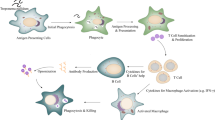Abstract
In a study of 21 wild-caught Barbadian vervet monkeys (Cercopithecus aethiops sabaeus), naturally-acquired- leptospiral agglutinins were found to persist for over five years. Groups of seropositive as well as seronegative vervets were given a placebo, or full-strength monoclonal antibodies MCA F12C3 (Icterohaemorrhagiae copenhageni), or diluted F12C3 MCAs. They were challenged 24 hours later with a suspension of highly virulent leptospires (copenhageni) administered intraperitoneally.
Immunoprotection was evident in animals receiving full strength MCAs as measured by their failure to develop any substantial antibody response and by their lower geometric mean titres over a period of 142 weeks (maximum GMT of 113 compared with a maximum of 1280 in the placebo group). Diluted MCAs had little or no protective value. The serological response of the monkeys which were seropositive at capture to challenge with virulent copenhageni antigen was strongly anamnestic both in those given MCAs and those given placebo. None of the naturally or experimentally infected vervets showed clinical signs of leptospiral illness.
Similar content being viewed by others
References
Baulu J. (1982): Monkey crop damage control in Barbados. - Carib. Agric. Res. & Develop. Inst. (CARDI), Final Report, 1–86 plus Bibliography and Appendices A to N.
BauluJ., EverardC.O.R. and EverardJ.D. (1987): Leptospires in vervet monkeys (Cercopithecus aethiops sabaeus) on Barbados. - J. Wildl. Dis. 23:60–66.
BauluJ. and HorrocksJ. (1985): The green monkey of Barbados. - Letchworth Press Ltd., Barbados.
BlackmoreD.K., SchollumL.M. and MoriartyK.M. (1984): The magnitude and duration of titres of leptospiral agglutinins in human sera. - N.Z. Med. J. 97: 83–86.
ColeJ.R., SulzerC.R. and PursellA.R. (1973): Improved microtechnique for the leptospiral microscopic agglutination test. - Appl. Microbiol. 25: 976–980.
EverardC.O.R. and BennettS. (1990): Persistence of leptospiral agglutinins in Trinidadian survey subjects. -Europ. J. Epidemiol. 6: 40–44.
EverardC.O.R., EdwardsC.N., WebbG.B., WhiteH. St. C. and NicholsonG.D. (1984): The prevalence of severe leptospirosis among humans on Barbados. -Trans. Roy. Soc. Trop. Med. Hyg. 78: 596–603.
EverardC.O.R., HayesR.J. and Fraser-ChanpongG.M. (1985): A serosurvey for leptospirosis in Trinidad among urban and rural dwellers and persons occupationally at risk. - Trans. Roy. Soc. Trop. Med. Hyg. 79: 96–104.
EverardC.O.R., MaudeG.H. and HayesR.J. (1990): Leptospiral infection: a household serosurvey in urban and rural communities in Barbados and Trinidad. - Ann. Trop. Med. Parasit. 84: 255–266.
FamatigaE.A. (1973): Leptospirosis in Philippine monkeys. - S.E. Asian J. Trop. Med. Publ. Hlth. 4: 316–318.
FüziM. and CsokaR. (1963): itSerologische Untersuchungen auf Leptospirose unter Affen. -Zeit. fur Immunitäts un Allergieforschung 125: 246–252.
HambletonP., BaskervilleA., MarshallR.B., Harris-SmithP.W. and AdamsG.D.J. (1980): Metabolic sequelae of experimental leptospirosis in grivet monkeys. - Br. J. Exp. Path. 61: 16–21.
HorrocksJ.A. and BauluJ. (1988): Effects of trapping on the vervet (Cercopithecus aethiops sabaeus) populations in Barbados. - Am. J. Primatol 15: 223–233.
KesslerM.J. and EverardC.O.R. (1988): Leptospiral agglutinins in the Cayo Santiago macaques. - Am. J. Primatol. 14: 369–373.
MarshallR.B., BaskervilleA., HambletonP. and AdamsG.D.J. (1980): Benign leptospirosis: the pathology of experimental infection of monkeys with Leptospira interrogans serovars balcanica and tarassovi. - Br. J. Exp. Path. 61: 124–131.
MinetteH.P. (1966): Leptospirosis in primates other than man. - Am. J. Trop. Med. Hyg. 15: 190–198.
17.MinetteH.P. and ShafferM.F. (1968): Experimental leptospirosis in monkeys. - Am. J. Trop. Med. Hyg. 17: 202–212.
PalmerM.F., WaitkinsS.A., FitzgeorgeR.B. and BaskervilleA. (1987): Experimental infection of monkeys with Leptospira interrogans serovar hardjo.-Epidem. Infect. 98: 191–197.
SchooneG.J., EverardC.O.R., KorverH., CarringtonD.G., InnissY.A., BauluJ. and TerpstraW.J. (1989): An immunoprotective monoclonal antibody directed at Leptospira interrogans serovar copenhageni. - J. Gen. Microbiol. 135: 73–78.
Sulzer C.R. and Jones W.L. (1978): Leptospirosis: Methods in Laboratory Diagnosis. - U.S. Publ. Hlth. Service, Center for Disease Control, CDC Publ. No. 79-8275. 40p. Atlanta, Georgia.
TerpstraW.J., LigthartG.S. and SchooneG.J. (1985): ELISA for the detection of specific IgM and IgG in human leptospirosis. - J. Gen. Microbiol. 131: 377–385.
Author information
Authors and Affiliations
Additional information
Corresponding author.
Rights and permissions
About this article
Cite this article
Everard, C.O.R., Baulu, J., Carrington, D.G. et al. Retention of leptospiral agglutinins and long-term response to administration of monoclonal antibodies in vervet monkeys (Cercopithecus aethiops) on Barbados. Eur J Epidemiol 7, 396–402 (1991). https://doi.org/10.1007/BF00145006
Issue Date:
DOI: https://doi.org/10.1007/BF00145006




